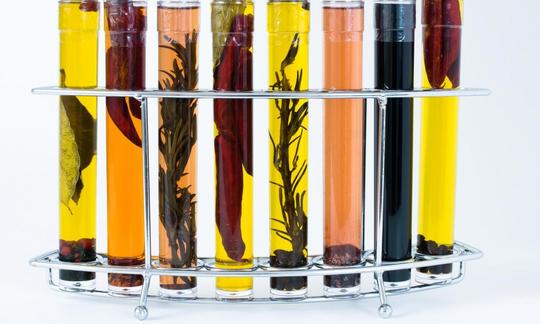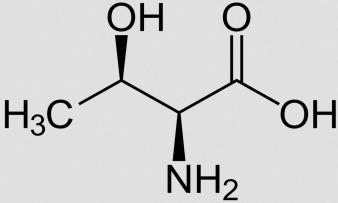Table of contents
Herbal vinegar is vinegar that has been refined with herbs. White wine vinegar can be used as a base, which is why it is also known as herbal wine vinegar . It is suitable raw (and preferably in organic quality) for seasoning salads, sauces and soups.
Use in the kitchen
Herbal vinegar is vinegar flavored with various herbs and spices. The vinegar used is usually brandy vinegar (also called table vinegar). But herbal vinegar , or in this case herbal wine vinegar, can also be made with white wine vinegar. The taste of the herbal vinegar varies depending on the herbs and spices used. However, it usually tastes sour and spicy.
Dressings refined with herb vinegar taste particularly good with tomato , cucumber , potato or white cabbage salads. It is also ideal for preserving and pickling raw vegetables and fruit. It can also be used to refine soups, sauces and marinades or as an ingredient in soft drinks.
Is herbal vinegar raw? Herbal vinegar based on brandy vinegar is not raw due to the production process of the brandy, which includes a distillation step. Whether herbal wine vinegar is considered raw depends on the method of production of the white wine used and on whether the white wine vinegar has been pasteurized. Unpasteurized white wine vinegar made from raw white wine (not heated above 42 °C) is considered raw. Is herbal wine vinegar vegan? This depends on the wine filtering method - read more about this in the white wine article.
Your own preparation
How can you make your own herbal vinegar? Herbal vinegar is easy to make yourself. The taste can be customized depending on the herbs and spices you choose. All you need to do is soak fresh or dried herbs (e.g. basil , tarragon , parsley , peppermint , sage , thyme ) and spices (e.g.pepper , nutmeg ) of your choice in a closed bottle with white wine vinegar or table vinegar for at least 2 weeks, or better yet 1 month. We recommend 150-200 g of fresh or 2-4 tbsp of dried herbs per liter of vinegar. Pour off the herbal wine vinegar you have intended for use and refill the bottle with fresh vinegar and possibly a few new herbs. Used in this way, the herbal vinegar can be used for over a year.
If you like, you can also make your own white wine vinegar - you can find out more in the white wine vinegar article.
Vegan recipe for cucumber salad with herb wine vinegar
Ingredients (for 2 people): 1 cucumber, 1 red onion , 15 g dill , 3 tbsp oat cream , 2 tbsp herb wine vinegar (preferably raw and organic), 1 tbsp rapeseed oil , 1 tbsp apple syrup , a little salt andpepper .
Preparation: Rinse the cucumber and cut into thin slices or slice. Place in a bowl, add salt, leave to stand for about 5 minutes and then pour off the water that has escaped. Peel the red onion and cut into thin rings. Rinse the dill, shake dry and chop finely. For the dressing, stir or blend the oat cream, herb wine vinegar, rapeseed oil and apple syrup and season with salt and pepper. Mix the cucumber slices, onion rings and dill in a bowl with the vegan dressing and serve.
Vegan recipes with herbal wine vinegar can be found under the note: " Recipes that have the most of this ingredient ".
| Not only vegans or vegetarians should read this: Vegans often eat unhealthily. Avoidable nutritional mistakes . |
Purchasing - Storage
In the vast majority of supermarkets (e.g. Coop , Migros , Denner , Volg , Spar , Aldi , Lidl , Rewe , Edeka , Hofer , Billa ) you can buy herbal vinegar - either based on white wine vinegar (then often referred to as herbal wine vinegar or white wine vinegar with herbs) or table vinegar/brandy vinegar (then mainly found as herbal vinegar or spiced table vinegar). Organic supermarkets (possibly Denn's Biomarkt , Alnatura ) sell vinegar with herbs in organic quality.
Herbal vinegar from conventional production sometimes contains salt , sugar , antioxidants (such as potassium metabisulfite), flavor enhancers (monosodium glutamate), acidity regulators and thickeners, although this should be clearly stated on the packaging. Organic products generally do not contain such additives and instead contain vinegar, herbs (herbal extracts, herbal flavors) and spices (spice extracts). There is also pasteurized vinegar and natural, i.e. unheated vinegar.
The availability of herbal vinegar/herbal wine vinegar varies depending on the size of the store, catchment area, etc. Our recorded food prices for the DA-CH countries can be found above under the ingredient image - and by clicking you can see their development at various suppliers.
Storage tips:
Herbal vinegar can be stored for several years if it is sealed airtight and kept in a dark, cool place. If vinegar smells musty, it is better to throw it away.
In natural herbal vinegar, acetic acid bacteria can multiply well in warmer storage conditions and form a mother of vinegar, a gelatinous mass of acetic acid bacteria. However, this is completely harmless to health. Traditionally, the mother of vinegar is used to "inoculate" starting liquids in order to speed up the conversion of alcohol to vinegar. 1 Remove the mother of vinegar by sieving if you do not want to eat it.
Ingredients - Nutritional values - Calories
The nutritional value of herbal vinegar varies depending on the selection of the basic ingredients used. Using the nutritional tables listed, we describe an average composition of the ingredients of a herbal vinegar.
The energy content of herbal vinegar is 20 kcal per 100 g. There are hardly any carbohydrates (0.6 g/100 g) or proteins (0.4 g/100 g). The proportions of fat and fiber are negligible. 2
100 g of herbal vinegar contains 0.25 mg of manganese - that is 13% of the daily requirement. Apple cider vinegar (0.25 mg/100g) has a similar content. Rice vinegar (0.2 mg/100g), white wine vinegar (0.16 mg/100g), balsamic vinegar (0.13 mg/100g) and red wine vinegar (0.05 mg/100g) contain less manganese. Pine nuts are a good source of the trace element with 8.8 mg/100g. 2
20 mg of magnesium are contained in 100 g of herbal vinegar (5% of the daily requirement). The content is comparable to that of white wine vinegar (18 mg/100g) and rice vinegar (22 mg/100g). With 628 mg/100g, horseradish is particularly rich in magnesium. 2
Herb vinegar contains 100 mg of potassium per 100 g (5% of the daily requirement). Apple cider vinegar (73 mg/100g), white wine vinegar (71 mg/100g) and red wine vinegar (39 mg/100g) contain similar amounts of the mineral. Dried seaweed contains a lot of potassium (eg kombu seaweed : 6100 mg/100g, dulse : 4684 mg/100g). 2 However, due to the high iodine content, only small amounts of this should be consumed at one time.
Acetic acid is the main compound in vinegar. The secondary plant substances it contains include phenols, carotenoids and phytosterols. 3
The complete ingredients of herbal wine vinegar, the coverage of the daily requirement and comparison values with other ingredients can be found in our nutrient tables. In the article Nutrients explained you will get a detailed insight into the topic.
Health effects
Vinegar is said to have a variety of health-promoting properties, such as antibacterial, anti-infective, anti-hypertensive, antioxidant and anti-cancer properties. Studies have also shown that it regulates fat metabolism, aids digestion, improves blood sugar levels, reduces the effects of diabetes and prevents cardiovascular disease. 3,4 ,5,6
The organic acids contained in vinegar are thought to be responsible for the antibacterial and anti-infective activity of vinegar, although the polyphenols it contains also contribute to this. The antioxidant property is attributed to the presence of polyphenols. Acetic acid is associated with the effects of some vinegars on the regulation of blood sugar levels and fat metabolism and weight loss. The evidence of the anti-cancer properties of certain vinegars is based on cell and animal experiments. The ingredients responsible also remain largely unclear. 4
According to a 2010 study, the method of production of vinegar affects its bioactive compounds and thus its functional properties. Among other things, it was found that the content of catechin and epicatechin in industrial vinegar was higher than that in traditional vinegar. 7
It is possible that herbs and spices used in herbal vinegar enhance or weaken certain effects.
Dangers - Intolerances - Side effects
In people who had consumed large amounts of vinegar over a long period of time, high levels of potassium, sodium and bicarbonate were found in the urine, as well as a stimulation of plasma renin activity in the blood plasma. One person is known to have consumed around 250 ml of vinegar (12.5 g acetic acid) daily and had to be hospitalized with hypokalemia (disturbance of the electrolyte balance). Injuries to the mucous membranes of the mouth and esophagus caused by vinegar and chemical burns to the skin caused by the use of vinegar to treat skin diseases are also known. 5
Acidic drinks and foods can soften the tooth structure and cause tooth erosion. Such products should only be consumed in moderation, brushing immediately before and after consumption should be avoided and a fluoride rinse should be used afterwards or a sugar-free yogurt should be eaten to neutralize the acid and remineralize. 8
When using herbal vinegar, pay attention to the herbs it contains if you are allergic to certain ones.
Folk medicine - natural healing
Hippocrates, his contemporaries, and even today's doctors prescribed oxymel, a medicine made from honey and vinegar (usually white wine vinegar ), for stubborn coughs. Hippocrates also recommended using vinegar to treat wounds and clean ulcers. Japanese samurai warriors in the 8th century took vinegar tonic as a tonic because they believed it gave them strength and power. The founder of forensic medicine, Sung Tse, advocated washing hands with sulfur and vinegar in the 10th century to avoid infections during autopsies. American doctors in the late 18th century treated many illnesses (e.g. dropsy, croup, stomach pain) with vinegar. Before the development of blood sugar-lowering drugs, "vinegar teas" were considered to alleviate the chronic suffering of diabetics. 3,9
In the media today, you hear and read about recommendations to treat nail fungus, head lice and warts with vinegar. However, there is no scientific basis for this. In addition, experts advise against using vinegar preparations to treat wounds or as a household disinfectant. 9
Ecological footprint - animal welfare
The CO 2 footprint is primarily used to assess the climate friendliness of a food. This depends on various aspects, such as cultivation method (conventional/organic), seasonality, country of origin, processing, transport and, if applicable, packaging. The CO 2 footprint of 1 kg of vinegar (unspecified) is 1.46 kg CO 2 eq. according to The Big Climate Database. 10
A 2017 study calculated the water footprint of aged wine vinegar. Between 1332 and 1892 liters of water are needed for 1 liter of wine vinegar. 11
In conventional agriculture, synthetic pesticides are often used to combat unwanted plants and insects. These have been proven to have a negative impact on the environment and affect important pollinators, birds and mammals, among others. Accordingly, when buying herbal vinegar, you should choose organic products in order to protect biodiversity and your own health, among other things. The use of such pesticides is prohibited in organic farming.
Detailed explanations of various sustainability indicators (such as ecological footprint, CO2 footprint, water footprint) can be found here .
Worldwide occurrence - cultivation
Vinegar production dates back to at least 200 BC. Vinegar and its use as a seasoning and preservative or as an ingredient in simple medicines have been known since early antiquity. 12 ,13
In countries with an oenological tradition, such as Mediterranean countries, wine vinegar is primarily produced. 13
Industrial production
The most important raw materials for the production of vinegar are an alcoholic liquid, Acetobacter bacteria (so-called acetic acid bacteria; a genus of aerobic bacteria) and oxygen. Herbal vinegar also requires herbs (herbal extracts, herbal flavors). Vinegar is produced from a variety of alcoholic liquids, most commonly from wine and beer. Alternatively, an alcohol product is first produced from fermentable carbohydrate sources by alcoholic fermentation (in the presence of yeasts, e.g. Saccharomyces cerevisiae ), such as from fruit, rice or sugar cane. Yeasts convert sugar into alcohol (ethanol) under anaerobic conditions. 3,14, 15
To obtain vinegar, the alcoholic, diluted liquid (alcohol content below 7.5% by volume) is subjected to acetic acid fermentation. The conversion of alcohol into acetic acid takes place through aerobic acetic acid bacteria. The bacteria work best at temperatures of 28 °C with full air supply. The bacteria's tolerance limit is below 20 °C and above 33 °C. 15 Essentially, acetic acid fermentation is not fermentation, but rather an incomplete oxidation or fermentation, as the process requires oxygen. 16
Vinegar is produced either by traditional, slow processes (eg Orléans process) or by industrial, fast underwater processes (eg submerged process, generator process). 3,13
Slow processes are characterized by fermentation using surface cultures, in which acetic acid bacteria are placed at the interface between liquid and air. The presence of the bacteria and the conversion of alcohol into acetic acid is thus limited to the surface of the vinegar-forming liquid. The Orléans process, one of the oldest techniques for producing vinegar, uses wooden barrels with side openings (for air circulation). Today, slow methods are used to produce traditional, selected vinegars. A long period of time (weeks to months) is required to achieve a high degree of acetic acid - this explains the expensive prices of traditionally produced products. These methods allow for simultaneous acetic acid formation and maturation, which produces high-quality vinegars. 3,12, 13,15
Rapid production processes produce vinegar within a few days (between 20 hours and 3 days). Commercial vinegar production uses underwater processes such as generator processes and submerged processes. Underwater methods involve immersing acetic acid bacteria cultures (directly or on a device) in alcohol-containing liquids and adding oxygen. The submerged process is one such method. The acetic acid bacteria are located directly in the liquid. Turbines supply the bacteria with oxygen by continuously blowing air into the liquid. The conversion of alcohol to acetic acid by the acetic acid bacteria takes place at the air-liquid interfaces of the air bubbles. A disadvantage of these systems is that there is a loss of volatile compounds. 3,12,13,15
During the long fermentation period of traditional methods, a non-toxic slime of acetic acid bacteria known as mother of vinegar can form. To prevent the formation of these organisms, many producers filter and pasteurize their vinegar before bottling. In natural vinegar, a mother of vinegar can form after opening, which can be easily removed by filtering. 9,15
Further information
Vinegar, from the French vin aigre (meaning "sour wine"), can be made from almost any fermentable carbohydrate source, such as wine, molasses, apples , grapes , grains, coconuts , melons, honey and potatoes . A distinction is made between vinegar produced from fruit juices and vinegar produced from raw plant materials. 3,9
Vinegar products in the USA must have an acidity of at least 4%. In Europe, however, there are regional standards for vinegar. White spirit vinegars have 4-7% acetic acid, while apple cider vinegar and wine vinegar contain 5-6% acetic acid. The alcohol content of wine vinegar is 1.5% vol. The alcohol content of other vinegars is 0.5% vol. 9.17
Flavoured specialty vinegars are divided into herbal and fruit vinegars. Herbal vinegars are white spirit vinegars or wine vinegars that are enriched with herbs and spices. Fruit vinegars consist of wine vinegar or white vinegar sweetened with fruit or fruit juice. Traditional vinegars are products made from regional foods, produced according to traditional customs. Balsamic vinegar from Modena (Aceto Balsamico di Modena) is made from the local white Trebbiano grapes, which are harvested as late as possible, slowly fermented and left to mature in barrels made of various types of wood. Rice vinegar is produced mainly in Asia, coconut and cane vinegar can be found in India and the Philippines, and date vinegar is well known in the Middle East. 9
You can also find detailed articles about the following vinegars: white wine vinegar , red wine vinegar , balsamic vinegar , white balsamic vinegar , apple cider vinegar and rice vinegar .
Alternative names
for herbal vinegar can also be found under the following names: spiced table vinegar, herbal wine vinegar and white wine vinegar with herbs.
In English, herbal vinegar is called herbal vinegar or herb vinegar.








Comments